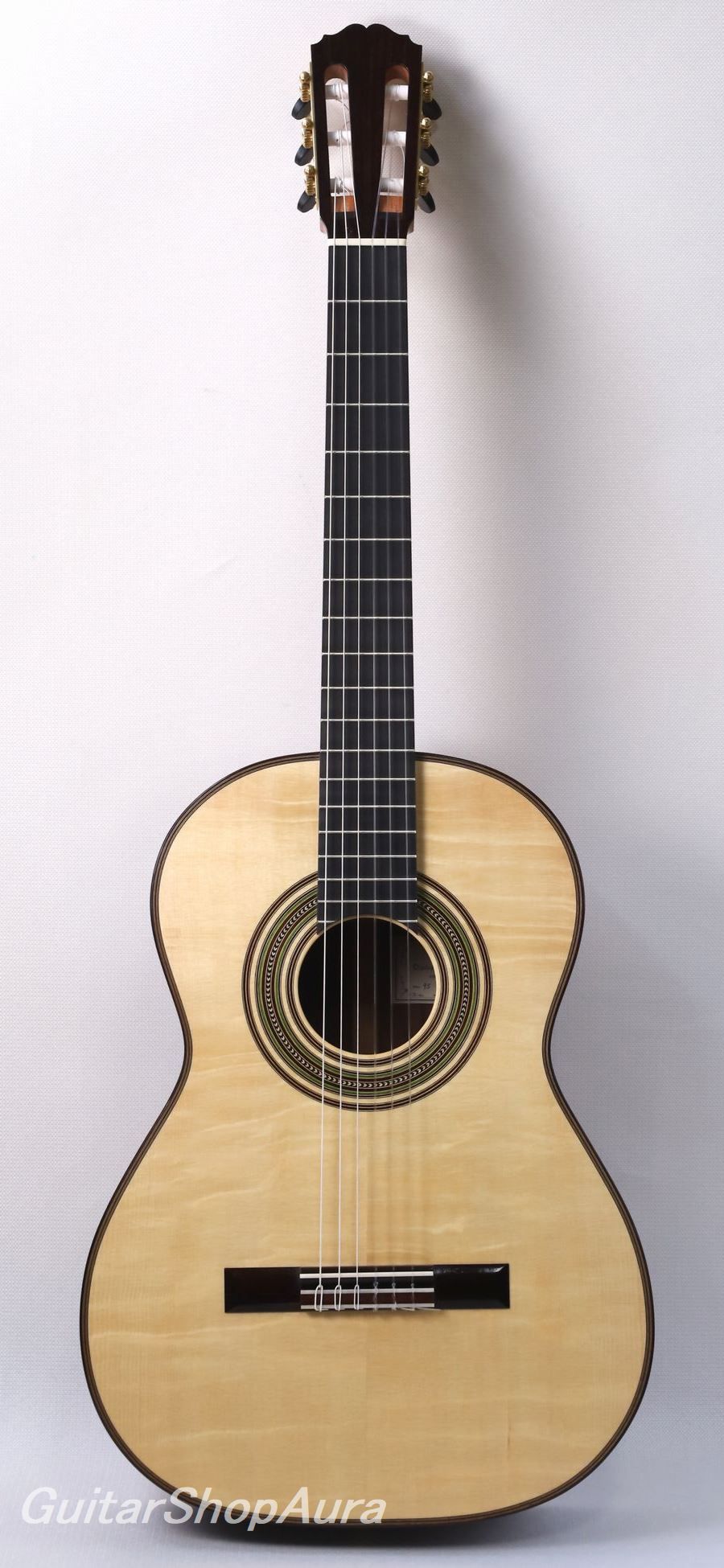
| Instrument | Daisuke Kuriyama |
| Category | Japanese Classical Guitars 〔New〕 |
| Number/Model | Hauser I 1929 model No.95 |
| Scale length | 650mm |
| Country | Japan |
| Year | 2023Year |
| Top | Solid Spruce |
| Side&Back | Solid South American Rosewood |
| Condition※ | 10 |
| List price | ¥990,000 |
| Price (tax included) | ¥940,500 |
| option | Without case |
Click to enlarge the photos below
Neck:Cedro
Fingerboard:Ebony
Finish:top:Shellac / back & sides:Shellac
Tuning Machine:PING WELL
String height:1string 2.5mm/6string 3.8mm
[Profile]
Born in 1981, Daisuke Kuriyama began making guitars on his own while studying at Tokyo Zokei University, and joined a major music store in 2003, where he worked in the repair department for over 10 years. He joined a major music store in 2003 and worked in the repair department for over 10 years, where he had the opportunity to study many famous instruments from Japan and other countries, and this is where his sensitivity to tone developed. During his time with the company, he was introduced to the maker Kaoru Ono, and in 2010 he began receiving direct instruction at Ono's workshop. Since becoming independent, he has been producing extremely precise and high quality guitars at a rate of about 6 to 8 per year. His works are based on the traditional Spanish construction methods of Torres, Domingo Esteso, Marcelo Barbero I, and others, and they all reproduce the taste and sound of good old Spanish guitars. In 2020, his interview and instruments were featured in Orfeo Magazine No.15 published by Camino Verde, a French publisher.
Orfeo Magazine No.15 features an interview with Kaoru Ono(Masahiro Tanabe, Alberto Nejime Ohno, Marin Nejime, Yuichi Shimizu, Daisuke Kuriyama).
[Description]
We are pleased to announce the arrival of a new Hauser I model No. 90, 2023, made by Daisuke Kuriyama. This work is not the 1937 Segovia model, but is made in reference to the Hauser I guitar made in 1929.
After being exposed to Spanish guitar playing by Andres Segovia in 1924, Hauser set out to create a German guitar in the Spanish style, based on Manuel Ramirez's guitar (actually made by Santos Hernandez). He reached his goal with the 'Segovia Model' in 1937, but by the time he reached that point, he had left behind many masterpieces that went far beyond the level of prototypes. The 1929 model featured here is a masterpiece that comes after the impressive 1928 Llobet model and is positioned between the wonderful 1931 model, which can be considered a pre-Segovia model. Kuriyama has carefully inspected the actual instrument and has firmly landed the shape and acoustics of this model within a single identity.
The sound board has a bear claw that gives a sense of wildness, and the large rosette is impressive, showing the influence of Antonio de Torres. The head design is modeled after Manuel Ramirez, and the slightly smaller body shape is both unique and elegant.
The vivid sound of the wood, which gives the impression of Hauser's Spanish tendencies, is pleasantly synchronized with the player's touch, and the response is powerful enough. The treble is dense and delicately changing, while the bass is stoic and massive. The contrast makes one feel exactly like Hauser. The clarity typical of Kuriyama has been added to the overall sound, and the fusion of the maker's individuality and the original has been ideally achieved.
The internal structure also reflects the original, but with a different arrangement from that of the Segovia model. The tension of the strings is a little higher, giving a sure feeling of sound.